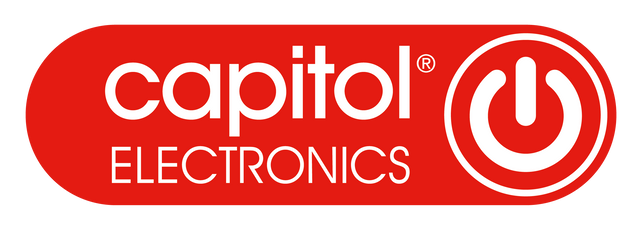info@capitolessentials.com

How Charging Banks Have Evolved Over the Years
The concept of mobile charging has come a long way from wall outlets and limited mobility. In today’s fast-paced digital world, the need to keep devices powered throughout the day has led to the widespread popularity of charging banks, also known as power banks. This article explores how these lifesaving gadgets have evolved from rudimentary devices to smart, multifunctional tools used across industries.
The Origins of Charging Banks
Before the convenience of modern charging banks, mobile device users had limited solutions for on-the-go power.
First-Generation Charging Devices
Early power banks were nothing more than modified battery packs, often bulky and inefficient. They offered limited charge cycles and couldn’t cater to high-demand smartphones or tablets. Often requiring hours to recharge, these early devices were considered more of a backup than a daily utility.
The Rise of Portability
As consumer demand grew, manufacturers began prioritising portability. The shift was largely driven by mobile professionals and travellers who required reliable power in compact forms.
Compact Designs and Early Innovations
First major changes involved size and shape. Charging banks became sleeker and lighter. Innovations like retractable cables and multiple USB ports made them even more user-friendly. Brands avoided unnecessary features, focusing on core functionality.
Advancements in Battery Technology
Battery technology has been a major game-changer in how charging banks perform today.
Lithium-Ion Revolution
The introduction of lithium-ion cells drastically improved energy density, allowing more power to be stored in smaller sizes. This single innovation marked a turning point in power bank usability, offering multiple device charges from a single compact unit.
Fast-Charging Integration
With quick-charging protocols like Qualcomm Quick Charge and USB-C PD, power banks could now charge devices faster and recharge themselves in record time. This made them indispensable in the modern tech ecosystem.
Solar and Eco-Friendly Charging Banks
Environmental awareness led to the development of solar-powered charging banks. These eco-friendly alternatives provide a sustainable option for campers, hikers, and eco-conscious consumers. Although not as fast as plug-in chargers, they offer independence from traditional power sources.
Smart Charging Capabilities
Artificial Intelligence and smart technologies revolutionised power banks in the 2020s.
AI and Device Recognition
Some charging banks can now detect the type of device connected and adjust voltage and amperage accordingly. This optimises charge speed and minimizes the risk of overcharging or short-circuiting.
Wireless Charging Banks
The integration of wireless charging pads into power banks brought yet another leap in convenience. This feature allows users to simply place their devices on the surface, eliminating the need for cords altogether. Though slightly less efficient, it offers unmatched ease of use.
Safety Innovations and Standards
With great power comes great responsibility. As power banks grew more potent, safety became a primary concern.
Modern units include features like:
-
Overcharge protection
-
Short-circuit prevention
-
Temperature control
-
Fire-resistant casing
Industry standards such as CE, FCC, and RoHS certifications ensure consumer safety and product reliability.
Design and Aesthetic Trends
Power banks are no longer just functional; they’re fashionable. Sleek metallic finishes, LED indicators, and customisable cases have transformed them into lifestyle accessories. Some even double as phone stands or desk organisers.
Charging Banks in Emergency and Travel Settings
Disaster relief agencies and humanitarian missions have adopted solar-powered or high-capacity banks as essential gear. Similarly, travellers rely on multi-port, ruggedized versions designed to withstand harsh environments. These niche categories continue to drive innovation in durability and capacity.
The Role of Charging Banks in Remote Work Culture
As remote work becomes more normalized, charging banks have become essential for digital nomads. Whether working from a beach or a café, these devices ensure constant connectivity. Multi-functional charging banks with built-in WiFi routers or Bluetooth speakers are now being used as mobile workstations.
Future Trends in Charging Banks
The evolution isn’t over. Here’s what to expect in the near future:
-
Graphene Batteries: Offering faster charging and longer lifespans
-
AI-integrated Device Ecosystems: Seamless device detection and prioritization
-
Modular Charging Banks: Customizable capacity and function
-
Universal Compatibility: More support for USB-C and future ports
Frequently Asked Questions (FAQs)
Q1: How long do modern charging banks last?
A high-quality charging bank can last between 300-1000 charge cycles, depending on usage and care.
Q2: What is the best way to store a power bank?
Store in a cool, dry place. Avoid extreme temperatures and ensure it holds about 50% charge if stored for long periods.
Q3: Can I bring a charging bank on a plane?
Yes, most airlines allow power banks up to 100Wh in carry-on baggage. Always check with your carrier.
Q4: How do solar charging banks perform on cloudy days?
Charging efficiency is reduced, but most models still store a small amount of power. Ideal for emergency use.
Q5: Are wireless charging banks as fast as wired ones?
Generally, no. Wired connections still offer faster charging speeds, but wireless is more convenient for short bursts.
Q6: Can charging banks damage your phone?
Not if they’re certified and equipped with protection features. Avoid using cheap, uncertified models.
Conclusion
Charging banks have undergone a transformative journey—from heavy, single-use gadgets to sleek, intelligent devices embedded with cutting-edge technology. With advances in AI, battery chemistry, and eco-conscious design, their evolution reflects our growing reliance on mobile technology. As the demand for connectivity continues to rise, charging banks will remain at the forefront of portable power solutions.
Our Favourite Charging Banks
Fast Charge 22.5W USB 10,000 mAh Power Bank (C1840)
Shop our full range of Power Banks here.


